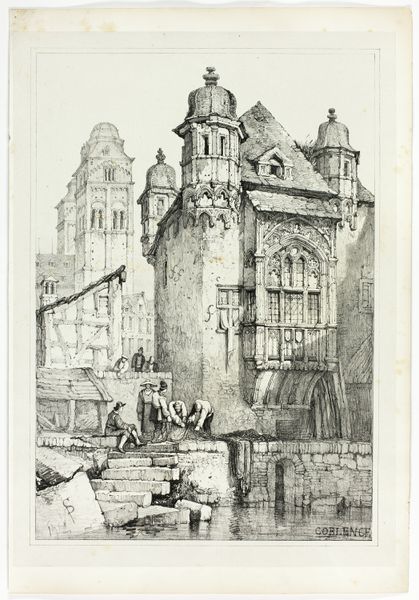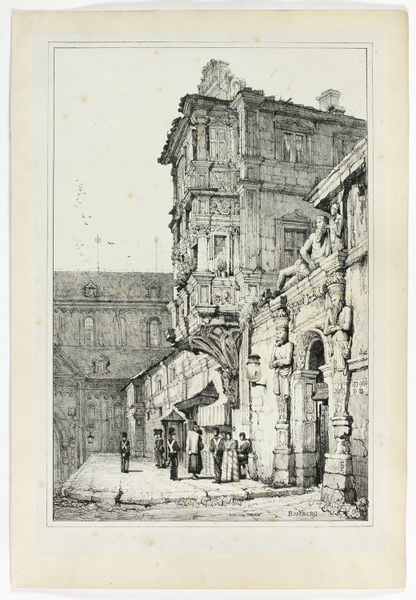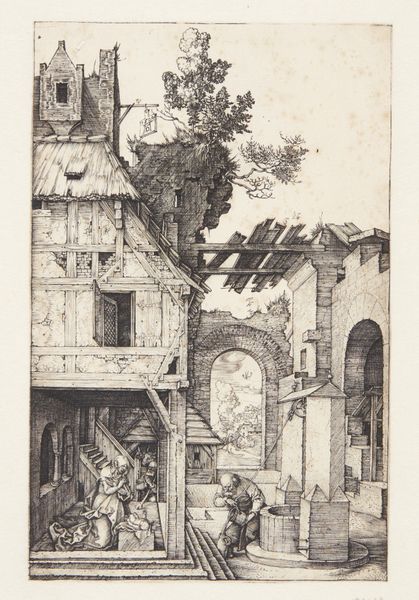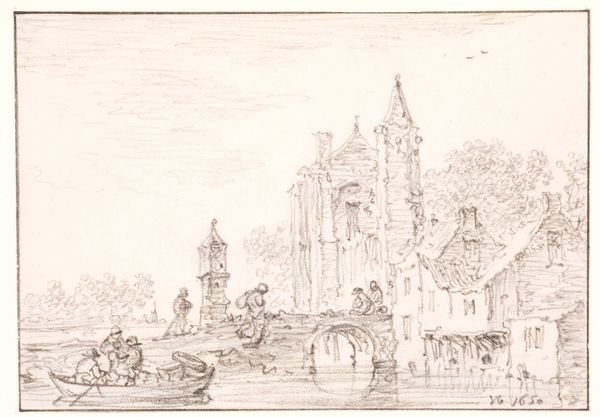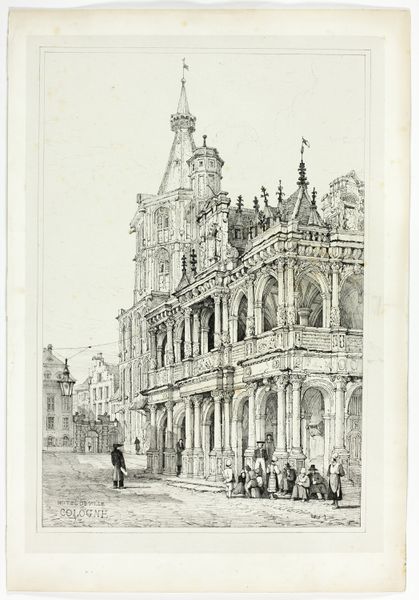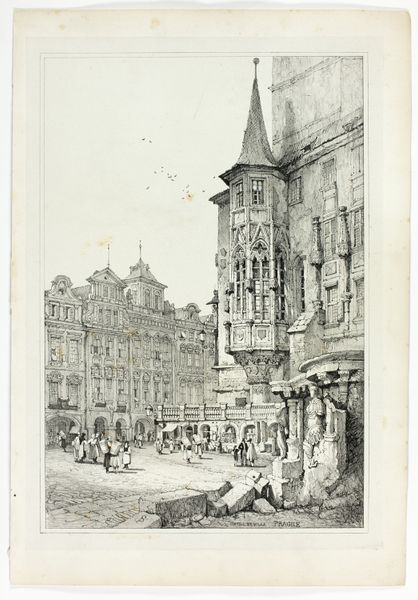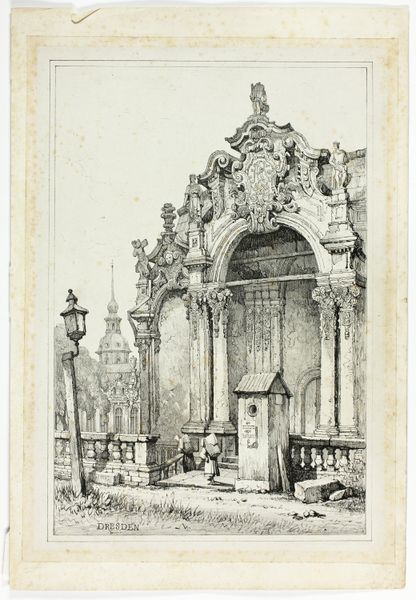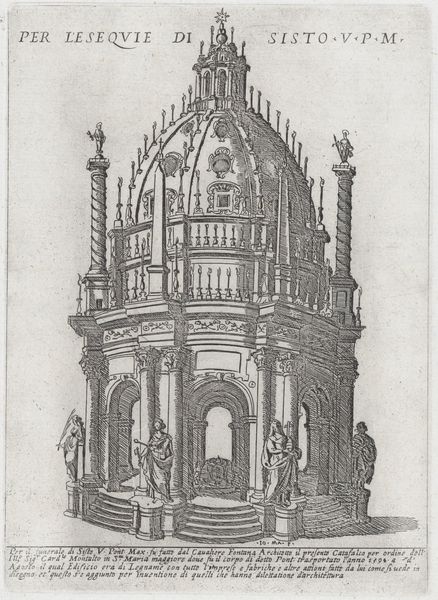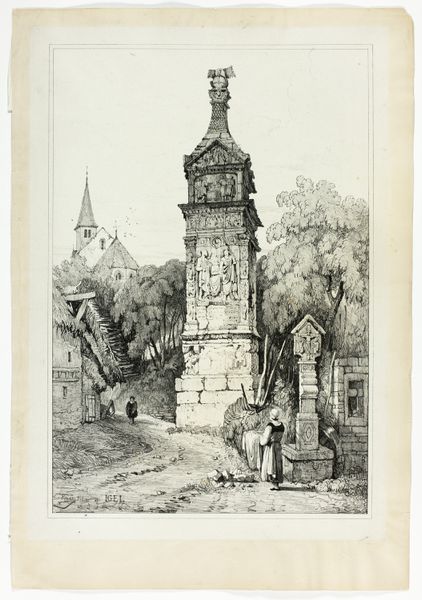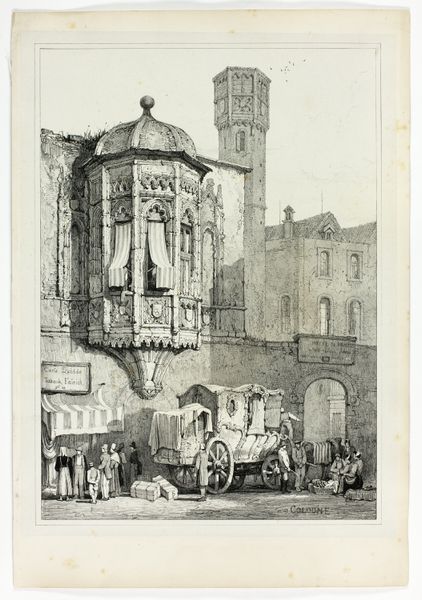
drawing, lithograph, print, etching, paper, ink, pen
#
drawing
#
lithograph
# print
#
pen sketch
#
etching
#
paper
#
romanesque
#
ink
#
pen
#
cityscape
Dimensions: 290 × 425 mm (image); 310 × 445 mm (primary support); 345 × 500 mm (secondary support)
Copyright: Public Domain
Editor: This is "Chateau de Martinsbourg, Mayence," a lithograph and etching by Samuel Prout from 1833, currently at the Art Institute of Chicago. I’m struck by how incredibly detailed the architecture is, almost photorealistic. What do you see when you look at this piece? Curator: It's crucial to consider the production. Etchings and lithographs like this were fundamentally about reproduction, creating affordable images for a growing middle class eager to consume picturesque views. Prout wasn’t just depicting a Chateau; he was participating in a system that commodified places. Notice the figures – probably included to suggest scale and bring the piece into a more intimate space, but also adding to the scene the perspective of a kind of ‘consumer’ within it. Editor: So, it's less about the Chateau itself and more about the market for images of such places? How does the technique inform that reading? Curator: Precisely. Look closely at the lines. The etching allows for that intense detail, simulating depth and texture that would attract buyers wanting a realistic souvenir. It speaks to the democratizing power of printmaking – art becoming more accessible, transforming taste, while creating new commercial markets to exploit and cultivate the taste. The paper itself, its quality and durability, further influences its lifespan as a commercial product. What purpose did Prout see this for? A sketchbook reproduction perhaps, a study for paintings later down the line? Editor: I hadn't thought about it that way, but it's fascinating to consider the social context of its creation. It does shift how I see the image—less as a representation of a place and more as a manufactured object for consumption. Curator: Exactly. By understanding the labor, materials, and modes of production, we unlock a richer understanding of the artwork's significance and purpose, challenging assumptions about its inherent value beyond mere representation. That tension between "high art" and the marketplace is key.
Comments
No comments
Be the first to comment and join the conversation on the ultimate creative platform.
